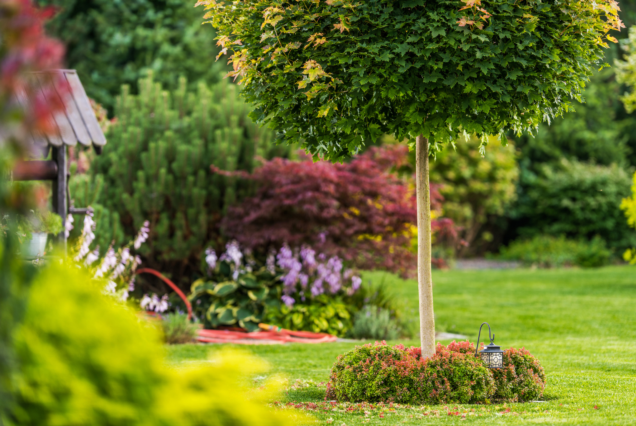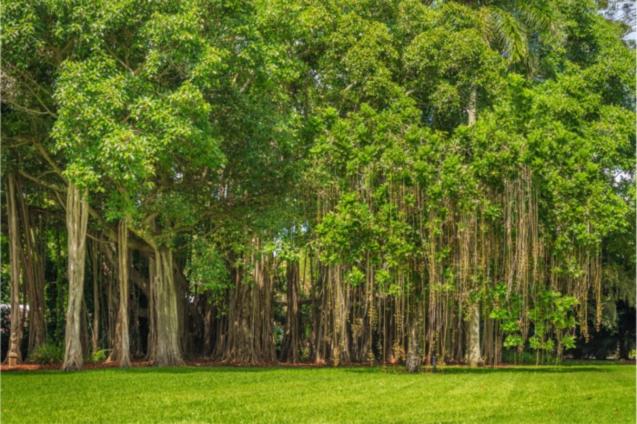
The Lowdown On Tree Risk
By Dickies Tree Service|July 27, 2024
Trees are an important resource and have many benefits for our lives and for the environment.
But while they’re precious - they can also cause harm - and an important part of an arborist’s job is to determine whether a tree is ‘safe’. Put another way, an important part of their job is to ensure that people and property are safe from a branch, or the tree itself, from falling and causing damage - and they do this by undertaking a tree risk assessment.
Interestingly, the primary consideration of a tree risk assessment isn’t actually the condition of the tree. It’s where the tree is located and how that space is used. For example, if a tree or large branch falls onto a power line, into say a school or public space, the consequences can be significant.
Any tree can fall and no tree can be deemed 100% ‘safe’, but there are some things that property owners can look out for. This article identifies the common signs that indicate a tree may be hazardous, and if you have any concerns, it’s always a good idea to get a professional opinion and determine a course of action to protect people, property and the tree itself.
Signs that a tree could be at risk include:
In doing a tree risk assessment, the arborist will consider the location, size and species of the tree, as well as the target that is at risk and the likelihood of failure given the structure of the tree and its condition. They will prepare a comprehensive report and options to reduce or eliminate any risk that they’ve identified.
What happens after a tree risk assessment?
Once the tree risk assessment has been done, the arborist will make recommendations. The plan of action can range from something as simple as a routine regime of quality care for the tree, cabling or bracing the tree or pruning it to removing the tree in its entirety. If practicable, a solution may be to remove the actual ‘target’ to prevent it from being damaged from a falling branch or tree. And of course, if a tree is removed, the aim should be to replace it with a suitable type of tree in an appropriate location.
Trees play a vital role in enhancing our quality of life and we need to take care of them. They help clean the air, filter our water, support wildlife, minimise erosion and beautify our world - but they can pose a risk to people and property. If you have any concerns about a tree on your property or in a public space, get in touch with Dickie’s Trees. With over 30 years’ experience as leading arborists in Perth, they’re well qualified on anything and everything to do with trees, including tree risk assessments.
But while they’re precious - they can also cause harm - and an important part of an arborist’s job is to determine whether a tree is ‘safe’. Put another way, an important part of their job is to ensure that people and property are safe from a branch, or the tree itself, from falling and causing damage - and they do this by undertaking a tree risk assessment.
Interestingly, the primary consideration of a tree risk assessment isn’t actually the condition of the tree. It’s where the tree is located and how that space is used. For example, if a tree or large branch falls onto a power line, into say a school or public space, the consequences can be significant.
Any tree can fall and no tree can be deemed 100% ‘safe’, but there are some things that property owners can look out for. This article identifies the common signs that indicate a tree may be hazardous, and if you have any concerns, it’s always a good idea to get a professional opinion and determine a course of action to protect people, property and the tree itself.
Signs that a tree could be at risk include:
- Large, dead branches in the tree or beneath it
- Detached branches hanging in the tree
- Signs that a branch is splitting away from the trunk
- A cavity in the tree trunk
- Rotting wood in the trunk or along any of the bigger branches
- Cankers (dead, discoloured or depressed areas on the bark or branches)
- Visible signs of poor tree health (eg unusual discolouration or size of leaves)
- Mushrooms or fungus at the base
- The tree suddenly leans to one side
- Evidence that the roots have been damaged (this could be from construction work, digging trenches near the tree etc)
- A recent change in the soil level around the tree
- A history of severe pruning or topping
In doing a tree risk assessment, the arborist will consider the location, size and species of the tree, as well as the target that is at risk and the likelihood of failure given the structure of the tree and its condition. They will prepare a comprehensive report and options to reduce or eliminate any risk that they’ve identified.
What happens after a tree risk assessment?
Once the tree risk assessment has been done, the arborist will make recommendations. The plan of action can range from something as simple as a routine regime of quality care for the tree, cabling or bracing the tree or pruning it to removing the tree in its entirety. If practicable, a solution may be to remove the actual ‘target’ to prevent it from being damaged from a falling branch or tree. And of course, if a tree is removed, the aim should be to replace it with a suitable type of tree in an appropriate location.
Trees play a vital role in enhancing our quality of life and we need to take care of them. They help clean the air, filter our water, support wildlife, minimise erosion and beautify our world - but they can pose a risk to people and property. If you have any concerns about a tree on your property or in a public space, get in touch with Dickie’s Trees. With over 30 years’ experience as leading arborists in Perth, they’re well qualified on anything and everything to do with trees, including tree risk assessments.



